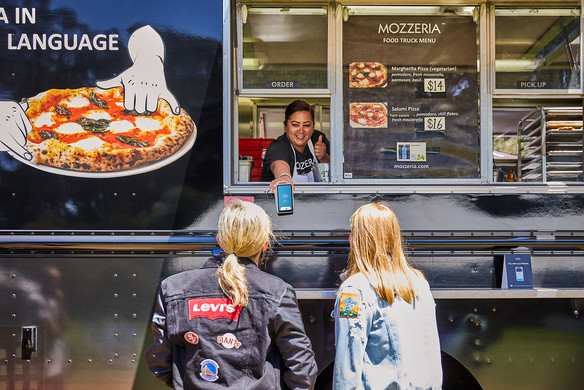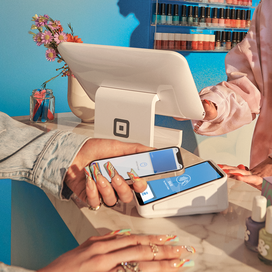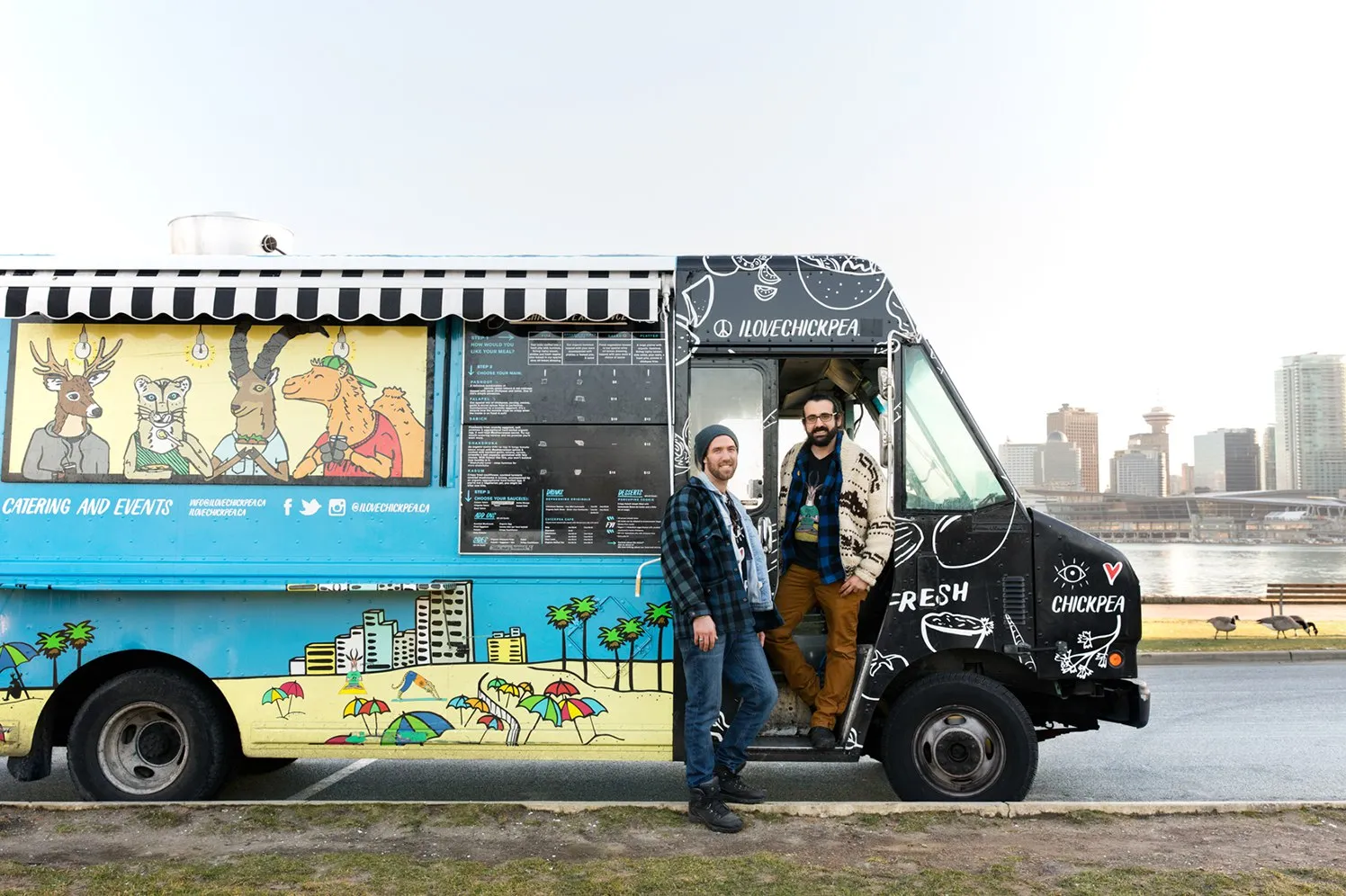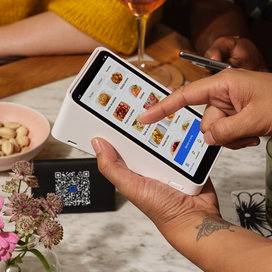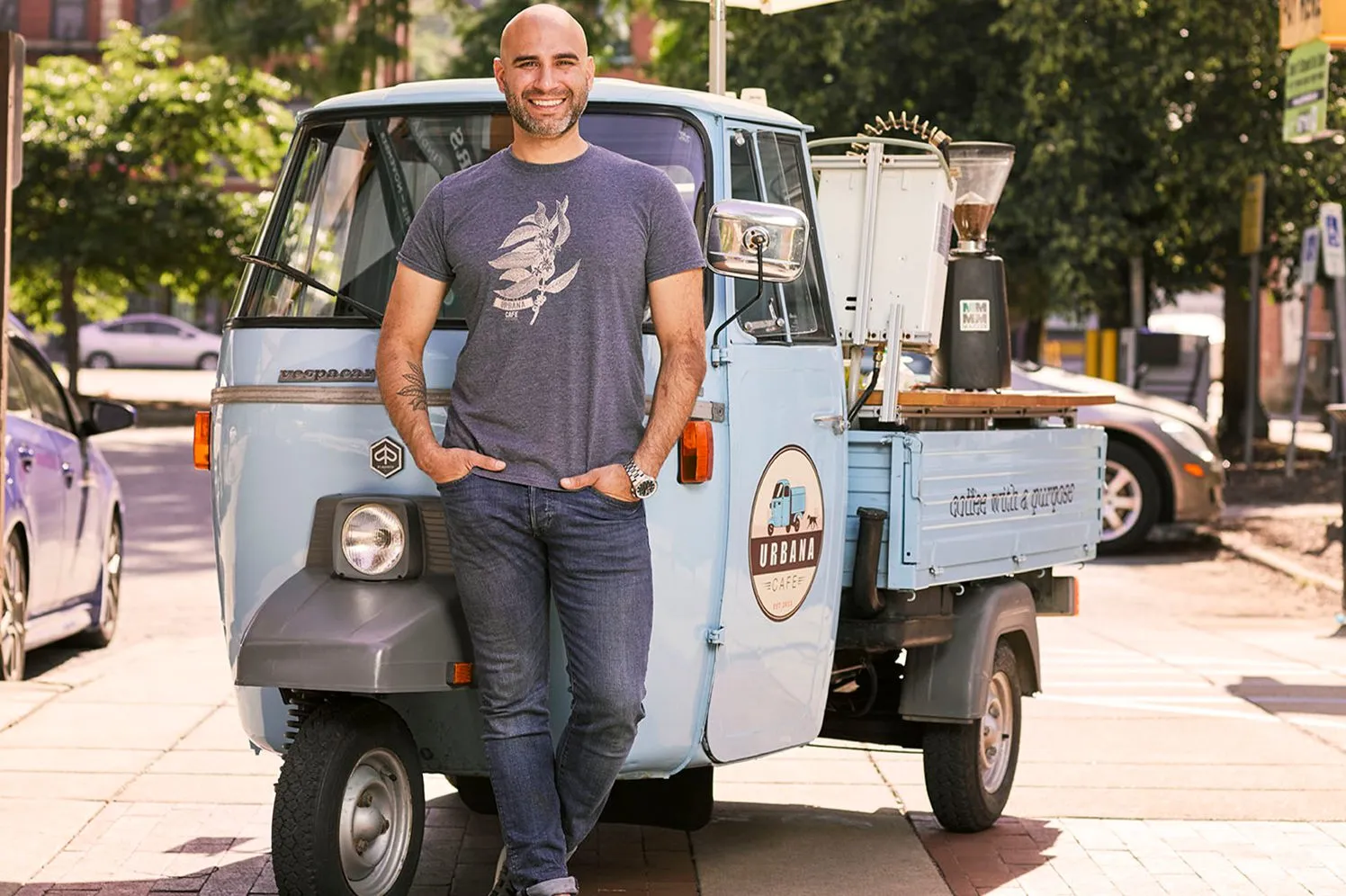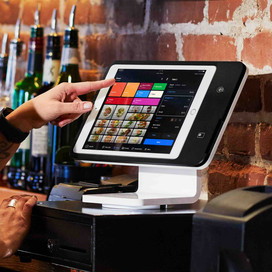Table of contents
Over the past five years, the food truck industry has seen an annualized growth rate of just over 13% with industry-wide revenue in the U.S. expected to reach $2.8 billion by 2025. Currently, there are nearly 80,000 food trucks in the U.S., according to IBISWorld, and experts expect that number to keep growing.
Why? Consumers are eager for access to unique, high-quality food at affordable prices, something that food trucks are uniquely suited to provide. If it’s been your dream to start a lower-overhead food service business, here’s everything you need to know about how to start a food truck.
Checklist: How to start a food truck in 10 steps
- Explore your local food truck scene
- Create a unique food truck concept
- Write a food truck business plan
- Calculate your costs and secure funding
- Obtain the licenses and permits needed
- Follow food safety and health regulations
- Purchase food truck equipment
- Choose the right food truck POS system
- Create a marketing strategy
- Soft-launch your food truck business
1. Explore your local food truck scene
If you’re looking at how to start a food truck business, begin by researching your local food truck scene to identify market gaps and discover customer preferences. Market research will help you craft a unique and profitable concept:
- Visit local food truck events and festivals to observe trending cuisines, underserved food types, pricing, and crowd engagement.
- Follow local food trucks on social media to track their locations, menu changes, and customer interactions.
- Use review platforms (Yelp, Google Reviews, etc.) to analyze what customers like or dislike about existing food trucks.
- Network with local food truck owners or join industry groups to gain insights into operational challenges and success tips.
- Research city regulations, permits, and zoning laws to ensure your concept complies with all local requirements.
- Identify underserved locations or busy streets by mapping out existing offerings and finding gaps you could fill.
- Conduct a SWOT analysis to fully understand where the best opportunities exist for your food truck business.
2. Create a unique food truck concept
Most successful food trucks choose concepts that are either very niche, like a unique take on a common cuisine, or something completely new. Keep in mind that the whole food truck revolution began with Roy Choi’s Kogi, which invented a new food: Korean tacos.
Creating a unique food truck concept requires a blend of market research, niche selection, and personal alignment with your skills and passions. Here’s how to develop a standout idea:
- Research the market by experiencing local food trucks, analyzing competitor reviews, and monitoring social media trends to identify potential industry gaps and popular demands.
- Analyze your target market. The biggest customers at food trucks tend to be young adults and parents with children at home. See what else you can learn about food truck customers, generally as well as those in your area.
- Choose a niche that excites you and has market potential. Here are some ideas:
- Regional BBQ (e.g., Texas-style brisket, Carolina pulled pork)
- Taco variations (e.g., Korean BBQ tacos, vegan jackfruit tacos)
- Plant-based comfort food (e.g., vegan mac and cheese, jackfruit burgers)
- Global street food (e.g., Filipino sisig, Lebanese shawarma, Japanese takoyaki)
- Breakfast-on-the-go (e.g., breakfast burritos, gourmet waffles)
- Loaded fries or nachos (e.g., birria nachos, truffle parmesan fries)
- Specialty grilled cheese (e.g., lobster grilled cheese, caprese melt)
- Align with customer preferences by testing concepts through pop-ups or surveys to ensure demand.
- Leverage your strengths. If you’re skilled at smoking meats, focus on BBQ; if you love baking, consider artisanal pastries or dessert hybrids.
- Add a twist to stand out, like fusion flavors (e.g., sushi burritos), premium ingredients (e.g., wagyu sliders), or a signature sauce.
By combining research, passion, and creativity, your food truck can carve out a distinct space in a competitive market.
3. Write a food truck business plan
Once you’ve done your research and decided on your final concept, you’re ready to write a food truck business plan. Your business plan is the north star for your food truck. Writing down your key goals and objectives, as well as the strategies you plan to use to get there, helps you stay focused when launching your new business (and for years after). Here’s what to include:
Mission
Known as an executive summary, this portion of your business plan essentially outlines how you will start your food truck, briefly describing your vision and unique value proposition, which might be something like “serving authentic Thai street food using locally sourced ingredients.”
Financial Planning
Your financial plan will include startup costs, like equipment, permits, licenses, truck purchase or lease, branding, and initial inventory, as well as your operating costs, which will include things like fuel, maintenance, ingredients, labor, insurance, and marketing.
You’ll also want to share your pricing strategy, which will detail your plan for competitive yet profitable pricing based on food costs and local demand. And you’ll need to make some revenue projections that describe your estimated daily or weekly sales, break-even analysis, and profit margins.
Marketing Strategy
Your business plan should also include your plan for marketing your food truck. Some potential strategies might include:
- Social media: Instagram, TikTok, and Facebook for promotions, behind-the-scenes content, and location updates.
- Participation in events and festivals: Local food truck rallies, farmers’ markets, and private events.
- Local SEO and online presence: Google My Business, Yelp, and food truck apps for visibility.
- Partnerships: Collaborations with breweries, offices, and influencers for pop-ups.
Target Audience
You’ll also want your food truck business plan to define your primary customer segments, whether that’s young professionals and families or students and late-night crowds. Also, be sure to identify peak times and locations for your business, like a downtown business district lunch rush or weekend events.
Market Research
Describe your process for market research, showing that you’ve performed due diligence through things like surveys, competitor analysis, and local food trends, and demonstrate you’ve selected a high-traffic location based on data like footfall, competition, and local regulations.
Competitive Analysis
Be sure your business plan also identifies direct competitors, which might include other food trucks, nearby restaurants, or fast-food chains. Highlight what differentiates you from these competitors. Is it a unique menu, faster service, premium ingredients, or something else?
Business Goals
Don’t forget to identify your business goals, including near-term and long-term. Short-term goals might be to achieve profitability within 6–12 months and build a loyal customer base, for example, while long-term goals might describe how you hope to expand to multiple trucks, offer catering, or open a brick-and-mortar location.
Purpose
Finally, your food truck business plan should clearly state its purpose, whether that’s to help you secure a business loan, attract investors, or provide you with a roadmap for growth and adaptability in a competitive market.
4. Calculate your costs and secure funding
Now comes the big question: How much does it cost to start a food truck? For a food truck business, startup costs will vary by location, cuisine, and other localized factors, but, at minimum, your food truck startup costs will include a truck, cooking equipment, and custom truck wrapping. Here are the key things to consider when determining how much you need to start a food truck:
- Startup costs: Estimate expenses for the truck, which can cost anywhere from $50,000 to $60,000 and up, as well as any updates or alterations that might be needed to adhere to your kitchen requirements. You’ll also want to consider equipment costs, how much for a food truck permit, inventory costs, and branding.
- Ongoing expenses: Account for regular, recurring costs like food supplies, staff, fuel, and marketing.
- Budget planning: Set a realistic budget for launch and at least six to 12 months of operations, anticipating that it will take time before you turn a profit.
- Funding sources: Make a plan for funding your food truck business. You can’t start a food truck without money. So you’ll likely need to access funds through loans, savings, investors, grants, or crowdfunding.
- Financial forecasts: Prepare revenue and profit projections to support funding requests you’ll need to make, as well as to help you plan for the future of your food truck enterprise.
5. Obtain the licenses and permits needed
To legally operate your food truck, you need to acquire the necessary permits and obey regulations at the city, state, and federal levels:
- Secure all necessary business licenses and permits, including zoning and parking permits if necessary. Be sure you understand business laws in your area to prevent any legal delays.
- Obtain health permits and food handler cards to ensure you are meeting local and state food and restaurant safety guidelines.
- Understand that laws and permitting requirements vary by locality and state, so what pertains at one location may not pertain to another.
You can learn more about food truck permitting here.
6. Follow food safety and health regulations
Many of the same requirements for restaurant food safety apply to food trucks, so make sure you perform the following due diligence tasks:
- Understand local health department requirements for mobile food vendors.
- Ensure proper refrigeration, food storage, and cleaning protocols.
- Train staff on hygiene, food handling, allergen awareness, and sanitation.
- Schedule regular inspections as required in your locality or state, and maintain compliance and operational documentation.
- Assess food temperature control.
- Evaluate expiration dates on inventory, and be aware of potential contamination.
- Store waste correctly.
7. Purchase food truck equipment
Buying a truck and cooking essentials account for a major portion of your food truck startup costs. Here are some tips for what you’ll need and how to reduce the cost to start a food truck:
- Consider renting a vehicle to reduce your upfront expenses and test the viability of your business. Another option is to purchase a trailer. While it’s less mobile, it’s a less costly way to start a food truck business.
- Buying a vehicle offers more control and long-term value, but it’s not the best option for everyone, especially if you’re trying a startup on a budget.
- Plan for the purchase of key food truck equipment like a fridge, grill, fryer, sinks, generator, food truck point-of-sale (POS) system, and ventilation. Look for gently used options on kitchen equipment to save money.
- Invest in branding, putting a custom wrap and/or signage on your food truck.
8. Choose the right food truck POS system
To ensure successful and seamless transactions for customers, invest in a point of sale (POS) that is both fast and reliable, since you’ll likely have rush hours and want to be able to take payments quickly so you can maximize sales. Look for the following key features in your food truck POS system:
- Mobile-friendly: Select a food truck POS system specifically designed for food trucks’ small spaces and on-the-go operations.
- Offline capability: Ensure the POS works without internet to avoid service interruptions.
- Inventory management: Look for an option that allows you to track ingredients and menu items in real-time.
- Integrated payments: Make sure your POS system can accept multiple payment types, like credit cards, contactless payments, and mobile wallets.
- Reporting: Evaluate the system’s capability to access and report on sales data, peak hours, and customer trends to help you improve operations. Square’s POS system, for example, has inventory management and reporting capabilities that can help you run and grow your business.
- Ease of use: Ensure the system is intuitive and quick to learn for fast-paced environments.
- Order customization: Confirm that the POS has the ability to handle modifiers, combos, or special requests easily.
- Speed and reliability: Select a POS system that offers fast checkout to keep lines moving during busy hours.
- Multi-location support: Plan for future expansion with a system that will operate at multiple sites or events.
- Loyalty and promotions: Check for built-in tools for discounts and loyalty programs, or email marketing.
- Integration with accounting or inventory tools: Confirm the POS can help you streamline backend operations and tax reporting.
- Cost and fees: Be mindful of upfront hardware costs, monthly fees, and transaction charges.
9. Create a marketing strategy
You want to ensure a crowd wherever and whenever you park your truck. Start with a truck design that captures attention on the street and speaks to your concept. Then, create a restaurant marketing plan and lay out a budget. Here are some ideas to get you started.
Build user-generated content (UGC) into your menu
One of your best marketing tools is already at the heart of your business: your food. Having a visual feast of items on your menu helps your business generate buzz online. The goal is for people to share photos of your food on social media and go viral — that drives business to your truck.
Make social media a priority
Social media is also a good way to keep your followers informed of your location and stay in touch with fans. An Instagram account, for example, can help you showcase your menu offerings (as well as any specials you’d like to share with customers).
Build a website
You also want to create a website that mirrors the vibe of your business. You can build it yourself with an online tool or outsource the website for a more professional feel. Be sure to include your phone number so people can call and find out where you are.
Also consider a plan for online orders: 78% of restaurant leaders report that online checkout is a main revenue driver for their business, according to Square’s 2025 Future of Restaurants data. Additionally, consumers said they would likely engage with an informative website (72%) or a mobile app (58%).
Set up review pages
Make sure your website is included on your online review pages like Yelp and Google Reviews. To ensure customers can leave you a Google review (and that you’re able to respond), you can create a free Google Business Profile. To get started and add or claim your Google Business profile, visit https://www.google.com/business/.
Your business accounts should also include photos, hours, typical locations, and price range. When you serve customers, encourage them to leave you a review on review platforms to help build a positive brand.
Invest time in PR
Another way to generate buzz is by reaching out to food bloggers. Find food bloggers with a big following in your area, and ask them to visit your truck. Consider comping the blogger’s meal — that meal will be far less than the free marketing you’ll receive if they post about your food.
Don’t forget about promotions
Offering coupons or discounts for your grand opening, or featuring special days like “Taco Tuesdays,” can also help drive business.
Loyalty programs are another powerful tool that benefits both customers and business owners. They offer customers exclusive deals and discounts on their favorite items, so working toward a unique reward or perk may be just the incentive a customer needs to pick your food truck over any others parked nearby. Plus, Square data shows that customers enrolled in a loyalty program spend 53% more and visit 40% more often.
10. Soft launch your food truck business
Want to test your food truck concept with minimal risk? A strategic soft-launch is the way to go. It can help you iron out any kinks, attract early fans, and fine-tune your menu before going all-in on your food truck investment. Here are some ideas to get you going.
How to soft-launch your food truck
- Start with a stand or stall at a local event, farmers’ market, or private gathering
- Offer a reduced menu to test operations
- Invite friends and family
- Connect with local influencers for a preview day
Gather feedback from your soft-launch
You’ll specifically want to ask about customers’ perceptions of the following:
- Food quality
- Uniqueness of your offering
- Value for the price
- Wait times
- Customer service
Optimize your menu and operations
Once you’ve conducted your soft-launch and gathered feedback from customers, influencers, family, and friends, it’s time to put their suggestions into action:
- Adjust portions, pricing, or prep time based on performance.
- Streamline workflows to improve speed and consistency.
- Use early data to refine your marketing plan.
With careful planning, a dash of creativity, and a passion for great food, your food truck business can successfully carve out its own niche in the competitive world of mobile cuisine.
How to start a food truck business FAQs
How do you identify and create a food truck concept?
Start by analyzing local food trends and gaps in the market, then blend your culinary passion with a unique twist, whether that’s fusion flavors or a specialty dish, to craft a concept that stands out in your local marketplace. For instance, super successful New York City food tuck owner Antonio Dragonas has made his mobile kitchen a standout with fresh and local ingredients, free-range meats, and wild-caught fish.
How much does it cost to start a food truck?
Starting a food truck typically costs between $50,000 to $200,000, including the truck, permits, equipment, and initial inventory, but costs can vary based on size, location, and menu complexity. Budget-conscious operators can start a food truck business for under $30,000 with a used truck and minimal upgrades.
How do I acquire a food truck?
Your options to acquire a food truck are to either buy a new food truck, buy a used food truck, or rent a food truck. Acquiring your food truck will likely be your largest startup cost.
- Buying a new food truck: A food truck manufacturer can provide a customized food truck designed specifically for your layout, menu, and branding needs. These manufacturers are familiar with common codes required for a food truck to operate legally, and will also have examples of existing successful food trucks. This option is the most expensive and can take several months, but your equipment will be brand new, organized around your specific needs.
- Buying a used food truck: Used food trucks can be found on marketplace listings. They will come partially or fully outfitted, but may require repairs or other updates to meet your local health codes. These will be more affordable than a brand-new truck, but make sure to have your potential purchase professionally inspected before making a final decision.
- Renting a food truck: Renting can be the most affordable and quickest option. If startup funds are tight, renting a food truck before you buy can be a useful way to test your concept. However, you won’t own the truck, so customization and branding options can be more limited than renting or buying.
What licenses or permits do I need to start a food truck?
Common licenses and permits needed for food trucks include a business license, an employer identification number (EIN), a food handler permit, health permits, parking permits, vehicle insurance, and a driver’s license, if you don’t already have one. Depending on the size and weight of your food truck, some areas may require you to have a commercial driver’s license (CDL).
Note that licenses and permits vary based on where you live, so visit your specific city government website to find out exactly what you need when it comes to licenses and permits for your food truck.
Do food trucks pay for locations?
Yes, food trucks typically pay for their locations through permits, parking fees, or rental agreements at private lots, events, or food truck parks. Some cities also require daily or annual fees to operate in public spaces.
Can I rent a food truck?
Yes, you can rent a food truck through commercial kitchen leasing companies, food truck franchises, or private owners. Renting is often a lower-cost alternative to buying outright.
![]()

